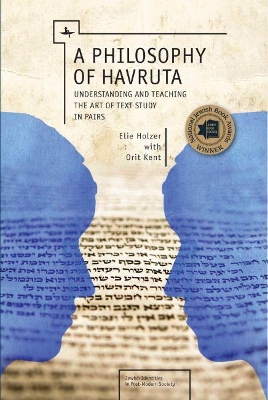Jewish Identity in Post-Modern Society
2 total works
No longer confined to traditional institutions devoted to Talmudic studies, havruta work, or the practice of students studying materials in pairs, has become a relatively widespread phenomenon across denominational and educational settings of Jewish learning. However, until now there has been little discussion of what havruta text study entails and how it might be conceptualized and taught. This book breaks new ground from two perspectives: by offering a model of havruta text study situated in broader theories of interpretation and learning, and by treating havruta text study as composed of textual, interpersonal and intra-personal practices which can be taught and learned. We lay out the conceptual foundations of our approach and provide examples of their pedagogical implementation for the teaching of havruta text study. Included are illustrative lesson plans, teachers' notes and students reflections, exercises for students, and other instructional materials for teaching core concepts and practices.
Groundbreaking interpretations of classical rabbinic texts lead the reader through an exploration of ""attuned learning"" an emerging paradigm of mindfulness that emphasizes alertness to ones own mental, emotional, and physical workings as well as awareness of others within the complexities of learning interactions. The pedagogical is integrated with the ethical in transformative teaching and learning; repair of educational disruptions; the role of the human visage; and the dynamics of argumentative and collaborative learning. Textual analyses reveal how deliberate self-cultivation not only infuses ethics and spirituality into the growth of teachers, learners, and co-learners, but also offers a potential corrective for calculative modalities in contemporary educational thinking. The author speaks to the existential, humanizing art of education, enabling readers to examine, expand, or revisit their beliefs and practices.

